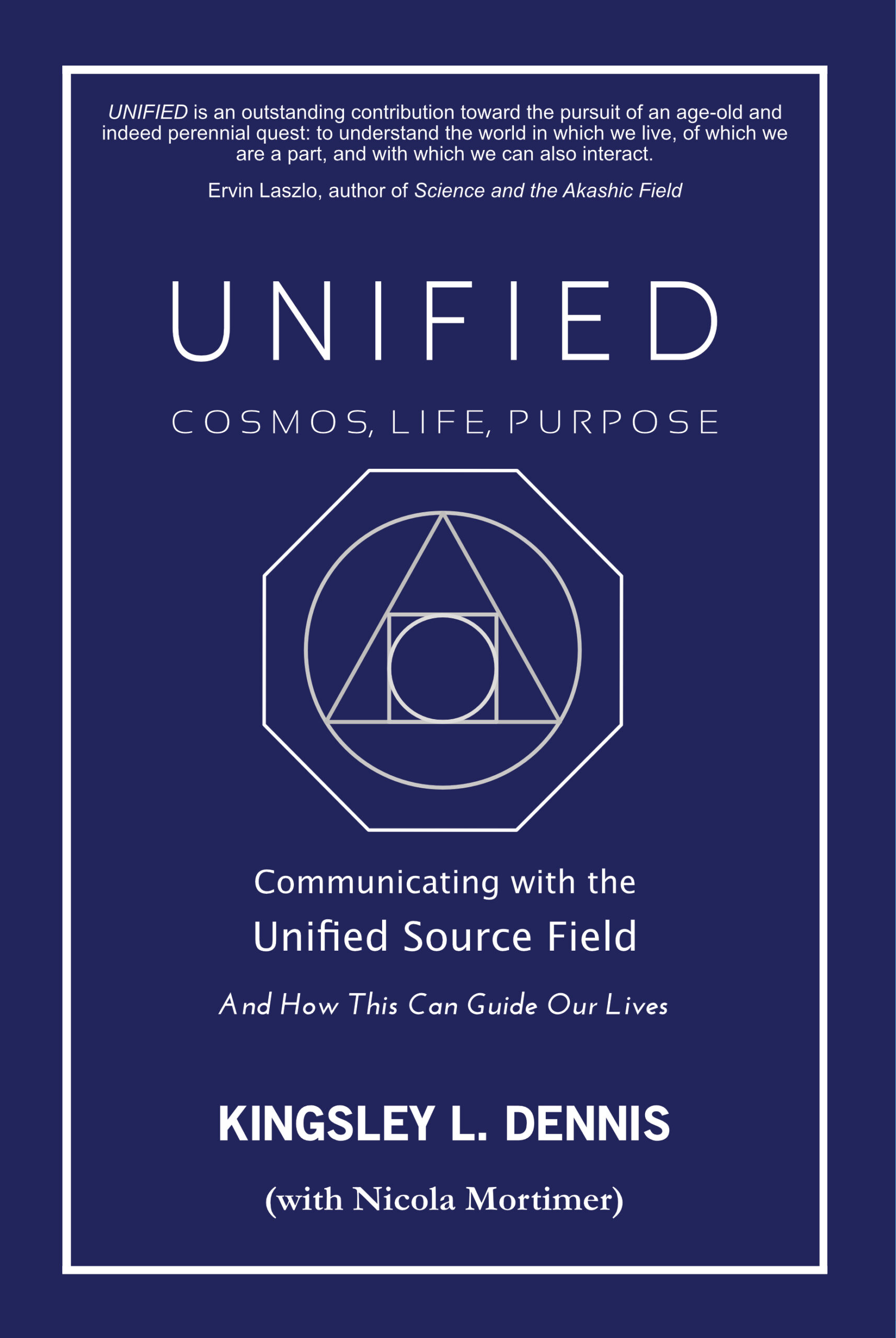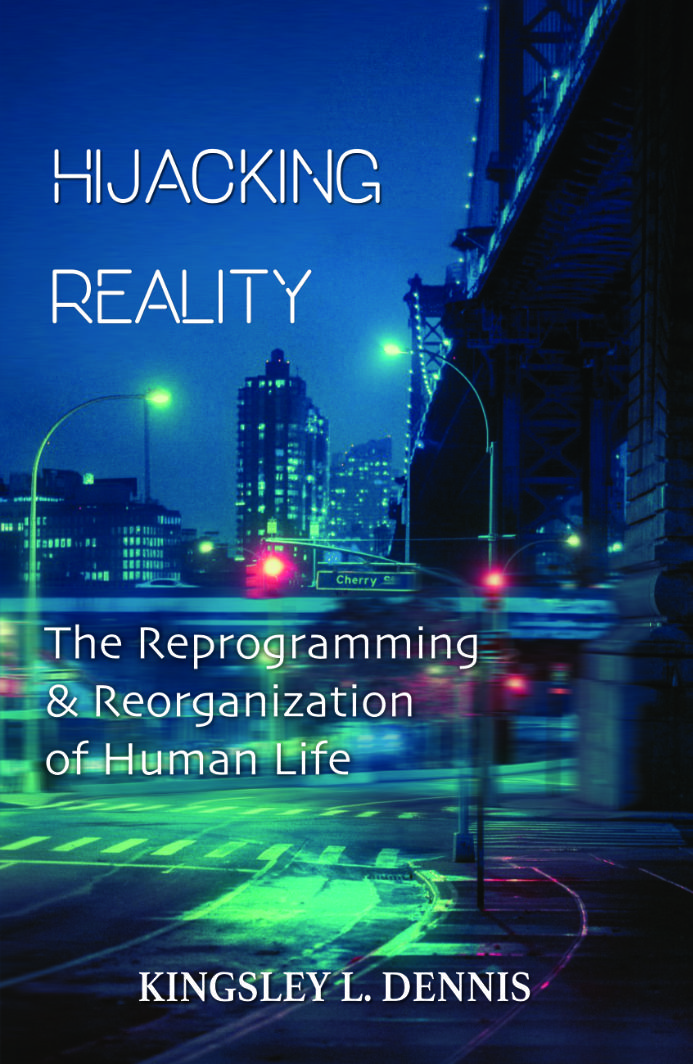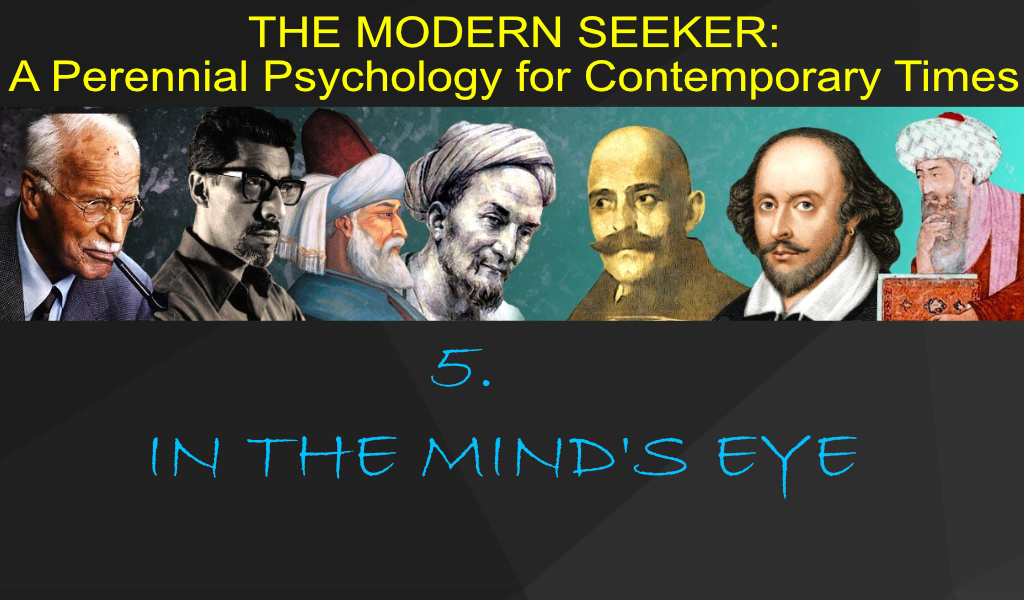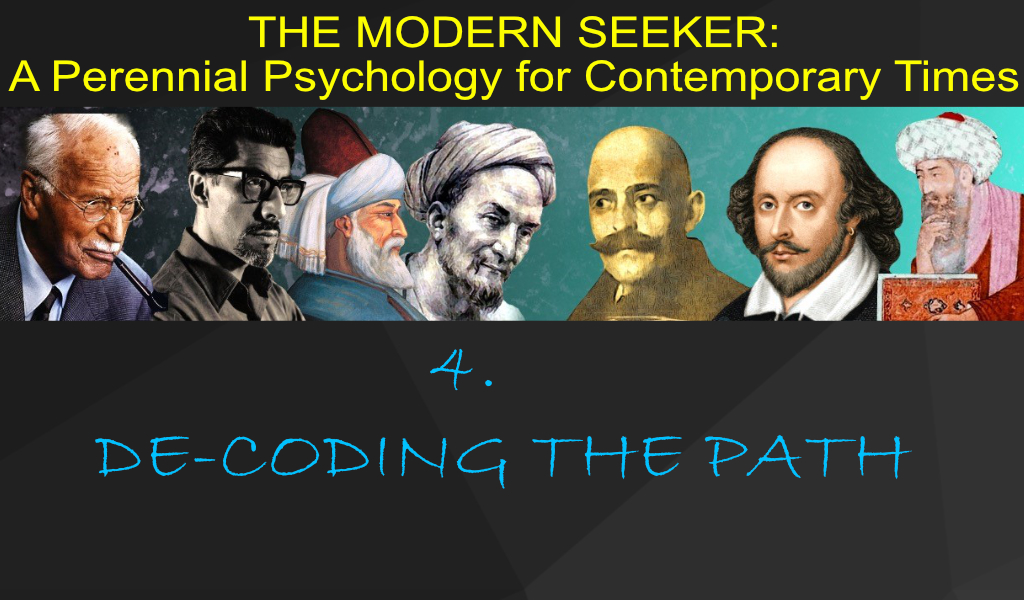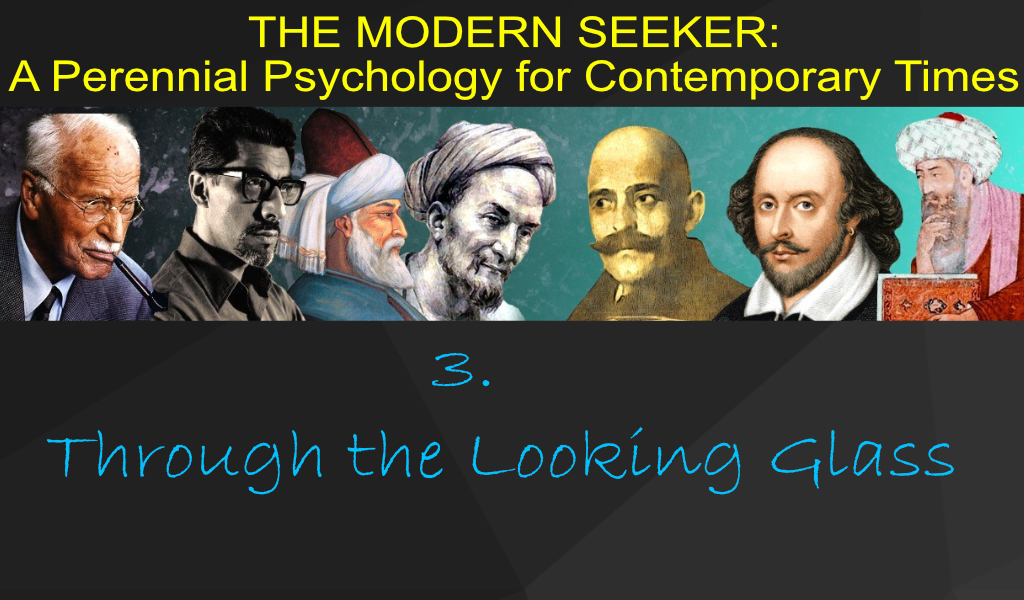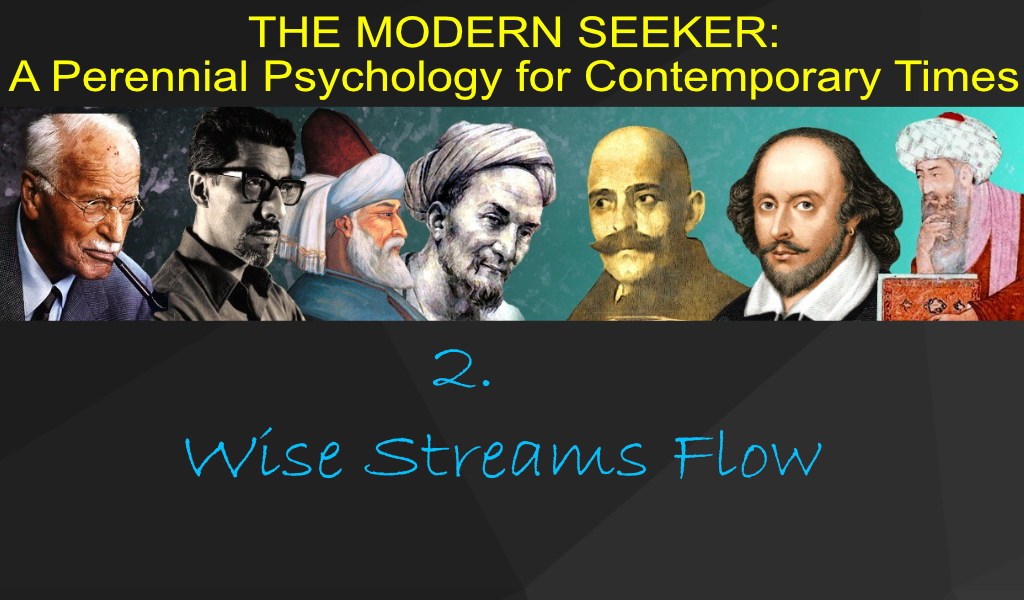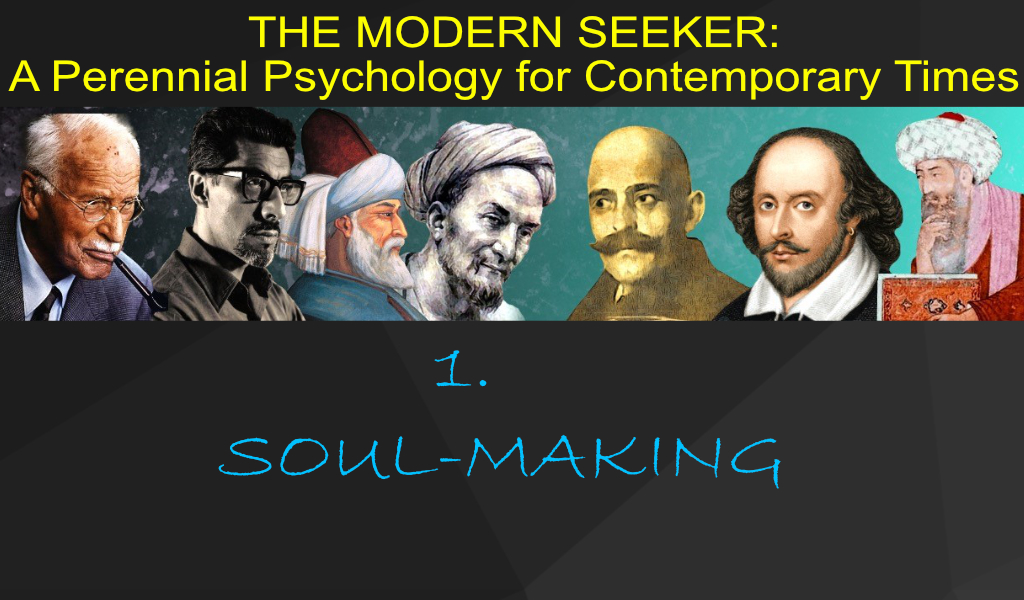And so, in mythological terms, what is to happen now? All of our old gods are dead, and the new have not yet been born
Joseph Campbell
Stories emphasize the operations of divine immanence in the world
Jonathan Black
In the beginning…there were many myths of creation. Many of the great spiritual traditions told of how the material world came into being out of a nameless domain. Some traditions have spoken of the ‘cosmic egg’ from which form emerged; or, as in the Old Testament, out of the dark and formless deep where the spirit of God moved:
In the beginning God created the heaven and the earth; and the earth was without form, and void; and darkness
[was] upon the face of the deep. And the Spirit of God moved upon the face of the waters. (Genesis 1:1-1:2).The Hindu spiritual traditions of India speak of an underlying reality that is Brahman – a reality that is eternal and eternally unchanging. The world of space and time that we are familiar with is known as lila, which describes our physical world as the playground of unceasing creative play within Brahman. In terms of this cosmology humanity is indeed at play in the fields of the Lord. The ancient Hindu Vedic rishis told that the essence of all things in the material world belonged to Akasha. A Sanskrit term, Akasha refers to the fifth element of the cosmos, beyond air (vata), fire (agni), water (jal), and earth (prithivi). The concept of Akasha is similar to the later western notions of aether – a space field that contains all the elements within itself. In the late 6th century BC Pythagoras spoke of the ‘aether’ as the fifth element of the world, in addition to earth, air, fire and water. In more modern terminology we see similarities with the notion of the underlying quantum vacuum (or plenum, matrix) that is described as the energetic sea of the cosmos from which matter-reality manifests. The Akasha/aether/quantum matrix is the cosmic energy domain from which everything has emerged, and into which everything will ultimately return.
Western streams of philosophic thought also speak of a domain beyond space and time. According to Plato there was a realm of Forms and Ideas – a domain of Pure Forms – beyond our space and time, and that our material world is only an image or copy of this real, pure world beyond. This pure realm was also spoken of by other Hellenic philosophers: Pythagoras referred to it as Kosmos, and Plotinus as The One. Perhaps the most famous illustration of Plato’s thinking is his allegory of The Cave. In this allegory Plato describes a group of people who have lived all their lives chained up and facing the wall of a cave. All they can see is the blank cave wall that lies in front of them. The opening of the cave is behind them, and the light that enters casts shadows on the far wall of the cave. Upon this wall, day after day, the chained people watch shadows move across as they cannot turn around and see the ‘real’ objects that pass behind them. Thus, they view these shadows as their reality and ascribe forms, reason, and life to them. This is the illusion – the shadows from beyond – that we ascribe as our ‘reality’ and give meaning to.
Similarly, the Chinese sage Lao-Tze (or Laozi) spoke of all things originating in the Tao/Dao as the unseen root of all material things. The Tao is both the originator (the source) of all things, and the destination to which all things eventually return. It is the unobservable and nameless no-space, no-time, no-form essence that our words fail. Are these non-spaces the realms where our gods dwell?
Our myths may be the only threads that connect us with such realms; they are the narratives that remain in the earthly domain to help jolt our memories. In his theory of anamnesis Plato says humanity possesses knowledge of its past, only that we have forgotten this knowledge and so we need to rediscover the knowledge within us. Plato wrote that humanity could only know the ‘real world’ in the form of memories. That is, human thought was really a form of recollection, and that humankind generally existed within a state of collective amnesia, having only fragments of recollection as reference points for reality. Plato was suggesting that humanity had lost – or fallen – from an earlier state of heightened awareness and now had only traces of this memory in their collective psyche as a reminder. In ancient Greek, truth is called aletheia which means not forgetting; and in Greek mythology before the human soul incarnates into this world it drinks from Lethe, the river of Forgetfulness and one of the five rivers of the underworld, so that it cannot remember its divine origins. Similarly, there is a Jewish legend that speaks of how we are struck on the mouth by an angel before birth so that we cannot speak of our pre-birth divine origins.
Humanity is being told through these and other related myths that we need to learn how to remember – that truth is re-collection, not cognition. We arrive in this earthly reality full of cosmic glory, only that we lack the key, the crucial guide, to unlock our memories and unleash the flood of knowing. When we come across the scattered symbols and signs of truth, we inherently intuit and sense deep down some great significance. Yet our minds are incapable of grasping the intangibleness of this hidden mystery. And that is how our lives play out, as we slip as souls within a playground of signs that are invested with ultimate meaning. We need to find the Ariadne thread to help us through this labyrinth that we find ourselves in, and to remember that we have our origins in the Primary Imagination. Our lives are not only unique creations but are acts of re-creation. They are attempts at entering once again into a lost remembrance which lies so far and yet so close to us. The 13th century Persian poet Jalāl ad-Dīn Rūmī wrote that ‘The Truth is closer to us than our own jugular vein.’ And yet so vain do we search, as if we have fallen away from true remembrance.
Myths Lost & Regained
One of humanity’s most enduring mythic narratives is what is commonly referred to as the Fall. What this generally suggests is a break with – or fall away from – another state. This is often interpreted as a break away from a heightened state of connection and awareness; or, a disconnection from the living truth. This implies that collective images and myths reappear in our minds, in our histories, as grand archetypes that serve as signifiers to assist humanity in its recollection of lost memories. Touching upon this, Carl Gustav Jung wrote that,
Our psyche is set up in accord with the structure of the universe, and what happens in the macrocosm likewise happens in the infinitesimal and most subjective reaches of the psyche.1
Here, Jung is highlighting the distinct correspondence between the human psyche and it’s synchronization with the grander universe of which we are a part. This emphasizes the notion of the participatory mind, a concept that was known – if not articulated – amongst our pre-modern ancestors.
It has been suggested by various psychologists that humanity resonates closely with the notion of the ‘Fall from Paradise’ because we carry within our collective consciousness vestiges of a remembrance. That is, we have a deep intuitive sense that we once belonged to something ‘higher,’ and to which we may one day return. It seems that within our interior selves lies the hope of returning to something once ‘lost’ – a Paradise Lost, or some sacred state of communion. This idea has been expressed in allegorical form in many tales, such as in this one, ‘The Precious Jewel,’ adapted from Eastern sources:
In a remote realm of perfection, there was a just monarch who had a wife and a wonderful son and daughter. They all lived together in happiness. One day the father called his children before him and said: ‘The time has come, as it does for all. You are to go down, an infinite distance, to another land. You shall seek and find and bring back a precious Jewel.’ The travellers were conducted in disguise to a strange land, whose inhabitants almost all lived a dark existence. Such was the effect of this place that the two lost touch with each other, wandering as if asleep. From time to time they saw phantoms, similitudes of their country and of the Jewel, but such was their condition that these things only increased the depth of their reveries, which they now began to take as reality. When news of his children’s plight reached the king, he sent word by a trusted servant, a wise man: ‘Remember your mission, awaken from your dream, and remain together.’ With this message they roused themselves, and with the help of their rescuing guide they dared the monstrous perils which surrounded the Jewel, and by its magic aid returned to their realm of light, there to remain in increased happiness for evermore.2
This allegory/parable, amongst others similar, reveals that a latent message lays hidden deep within us, and which acts as a chord of remembrance keeping us connected with something ‘essential’ yet forgotten.
Mythologists Joseph Campbell and Mircea Eliade have both shown that one story in particular threads its way through nearly all traditions and myths – the story of a lost idyllic golden age. This mythical narrative tells of the hero’s journey to restore the world to its former glory and high state: a tale of loss and the need for heroic restoration. It is also a journey to reconnect ourselves with a sense of the sacred; to restore the bond with a cosmos that enfolds humanity within a universal sense of meaning, where the human psyche merges into the significant whole.
Many myths recovered from the past, and from indigenous tribes, reveal a worldview of our ancients that accepted all things as part of a living, conscious, and sacred cosmos. Within this cosmological view all life was viewed as connected with an animating energy that interweaved throughout. As mythological researcher Richard Heinberg writes:
I feel compelled toward the view that our cultural memories of a Golden Age of harmony are the residue of a once-universal understanding of the spiritual dimension of human consciousness, and are at the same time memories of how contact with that dimension has been almost completely severed.3
The contact may appear almost severed, yet traces of it have remained in various traditions, some more obscure than others. This once bygone state that the stories and myths refer to as the Golden Age – or Paradise – can also be regarded as a metaphor for an evolved state of consciousness as well as a highly evolved state of civilization. Humankind’s state is that of having fallen into the grip of gross matter, and of having left behind a finer awareness of subtle energies. We have, as all major spiritual traditions commonly state, entered into a realm of separation from a divine or sacred source.
Mircea Eliade, in his The Sacred and the Profane, writes that every historical culture regarded the human condition as being under a temporary spell of unnatural limitation and separateness. Also, that our world now contains symbols and signs that serve to jolt human consciousness into some degree of reawakened awareness and remembrance, such as in the tale of the ‘Precious Jewel’ told above. Eliade reminds us that in so-called ‘primitive’ societies the act of understanding the symbol can help to succeed in ‘living the universal.’ Similarly, mythologist Joseph Campbell describes how the aim of ancient spiritual practices, tribal myths, and shamanic teachings was to assist in recovering a lost mode of awareness.
It is easy to conclude that the myth of Paradise (or of a Golden Age) represents an innate and universal longing, deep within humanity, for a return to a state of tranquillity from which we have become separated. Metaphorically, it may indicate that the inner being of the human, when in its natural and essential state, is in balance and harmony. Perhaps there have been historical ages in which human beings shared a state of oneness or union with all life and with their environment, and that this peak of civilization was indeed lost. The Hopi legend of the ‘First People’ talks of a time in the ancient past when people ‘felt as one and understood one another without talking,’ as if suggesting a form of collective communion. This legend describes a time when humans on the planet manifested a form of suprasensory perception, and where dialogue often occurred between various entities. Anthropologist Roger Wescott writes that:
Moreover, most mythic traditions concur in asserting that, in the Golden Age, human beings associated easily and often with beings that were discarnate or only intermittently incarnate, ranging from awesome cosmic deities to playful local spirits4.
Eliade, likewise, noted in his research that ancient myths spoke of a friendship between animals and human, with even knowledge of their respective languages.
Eliade speculates that the shamanic imagery and/or visions of human transformation into an animal may be a metaphorical account of re-establishing a connection that was lost ‘at the dawn of time.’ According to Eliade, the shaman goes into a transcendental state in order to ‘abolish the present human condition,’ which is regarded as a resultant state from the ‘Fall’ – and thus to re-enter into the natural condition of ‘primordial man’ as it was during the Golden Age.5 Heinberg considers whether:
…Paradise may be seen as serving a specific function, as a design for living embedded in the circuitry of human consciousness. All biological organisms, including human beings, contain elements of design…Perhaps we also contain within us a neurological or psychic program for the optimal design of social and spiritual relations between ourselves, the Cosmos, and Nature – a design of telepathic oneness and interspecies communion that represents the goal toward which our individual and collective experience would naturally tend to unfold.6
Heinberg is suggesting here that memories of Paradise/Golden Age may not only, or necessarily, refer to a physical reality or time but serve to activate and catalyze human neurological and psychic functioning into continued evolutionary growth. The memory, then, is not only as a remembrance of things past (as Proust would say) but may also function as a ‘design’ wired into us as a social and spiritual guide during dark ages – those times when our psychic, and thus also physical, states are low and separated from a sacred source.
Similarly, various religious, spiritual, and indigenous traditions all refer to this rupture (our ‘Fall’) as a descent into greed, egoism, fear, and selfishness. It is a state where the focus is almost entirely upon gross materialism. Gnostic, Hindu, and Buddhist traditions also refer to humanity forgetting its true purpose; of how the distraction of, and attraction to, the physical world produces a continued state of separation. Teutonic Norse myths state that a renewal of the world would only come after great destruction in which a period of chaos and disorder would arise that would see humans commit many degrading and tragic acts. There are also numerous accounts in ancient and sacred texts that depict the theme of cyclic destruction and renewal; from biblical accounts, Hindu scriptures, and Tibetan narratives. Our myths, stories, and narratives may serve to remind us of where we have been, and to where we need to return. Yet can we rely solely on the old myths, or are we now in need of new mythologies? After all, where did all the gods go?
New Mythologies
It has been said that our old gods are dead or dying. The many gods of times past were abandoned in favour of the one god concept with the rise of monotheistic religions. With this shift away from multiple gods – which played a more direct, intervening role in human affairs – a more individualized sense of self and self-consciousness began to emerge. The spiritual focus was now not on the interaction with multiple gods but of a relation with a single source that was transcendent and beyond the lowly human. Humanity no longer played ball together with their godly caretakers. The human psyche slowly became separated from a close communion with the gods. This psychic bond, or participation, between cosmic forces and the human soul gradually became severed, leaving the individual more to their own devices and further away from a ‘far off’ god.
This break from the interventionist gods is likely to have played a role in the shift of human consciousness more towards its own self-involvement, which amplified the presence and dominance of the ego. Along with this shift came the art of personal reflection, and the manifestation of individual thinking. This can be seen in the external transition from ancient Egyptian spiritual traditions to the human philosophy of the Greeks. This marked a shift toward knowledge as grasped by the human mind, and thus led to the increased belief that no gods were needed to understand such lofty concepts. Divinity, the realm of the gods, became a place to which certain elite human minds could broker access. This was seen as liberating the human soul from the direct and all-powerful influence of the gods in daily life. A new independence arose within the life of humanity that preceded an era of increasing human autonomy at play within a material world. The human being was now born into an environment where the gods had withdrawn. Humanity was now left to stand on its own spiritual feet, and to learn to navigate through a world given over to them by their gods. And yet it was precisely this kind of environment which made it possible for an individual human being to develop a sense of full responsibility for their own behaviour and spiritual state. The soul life of the human had now become their own task to contend with, and could no longer be seen as under the sway of external transcendental forces. Although this shift placed the onus of development upon the human self, it also dissolved the reciprocal understanding between human and cosmos.
By defining ourselves independent of the gods we also defined ourselves as similarly being separated from Nature. This process of separation between our interior and exterior lives was drawn out over centuries, and further exacerbated through orthodox religious thinking, scientific rationalism, Cartesian philosophy, and attitudes to the human body. We are now coming to the end of the influence of the Greco-Roman/Judaeo-Christian era. As philosopher Jeremy Naydler notes
It has achieved its purpose, which was to make us more individuated, more self- rather than god-centered in our soul-life, and thus more free. But now there is a need to become aware again of inner, spiritual realities, but to become aware of them grounded in our own sense of self and with a clear and discriminating intelligence with which we can once more turn toward them.7
Individual selfhood came at a great cost. In fact, it could only come about when the previous gods had faded from human consciousness. And yet from this came the emergence of self-consciousness, the focus on individual selfhood, and the possibility for self-transcendence through individual inner work. That is, to take the path back toward a cosmic, sacred communion through self-volition and individual choice. This path back to the gods (the sacred source) does not imply ‘going out’ there – to reach them in some realm beyond – but rather suggests allowing them back into the human psyche. This means receiving the sacred connection once again within the inner life/self of the human. We could phrase it as bringing the sacred impulse back down into material life – the re-sacralization of the material plane. It could be said that human destiny is to know the infinite without leaving the finite – both exist simultaneously and both are necessary.
Spirit is not recognized by it being something other than the material, but by overcoming its otherness. It is implicit within all material forms, and is in communion with all entities. In the sacred traditions spirit is a living recognition, not an inanimate one. That is, sacred spirit wishes to be known beyond its otherness. Our multiple gods, as depth psychology informs us, also represent aspects of the human psyche. Astrology places a similar pattern upon the planets, as their alignment influences psychic correspondences and can affect the human physically, mentally, and emotionally. In some of the most ancient spiritual traditions that came out of Egypt and Mesopotamia thousands of years ago, the realm of Spirit existed in a transcendental pure form beyond matter. It was human destiny for the privileged capable few to ascend through rigorous trial and initiation toward this otherworld and seek a connection with it so that it may manifest through them upon the material plane. Hence such cultures were star-orientated as this represented a source beyond the terrestrial earth. In more modern times, the implication has shifted to a view that sees Spirit as having its destiny to become implicated in matter. Together, spirit and matter form the necessary communion. The re-spiritualization – the re-sacralization – of the material world must come about through humanity’s involvement. The human must embrace the cosmos within themselves, and to bring it ‘down to earth,’ so to speak. This is now a mass endeavour, which suggests that the time for the elite special few initiates is over. In other words, where once a ‘higher’ state of consciousness was first developed through exceptional individuals, it is now to be developed through the mass by receptive individuals and communities connecting together across physical and temporal boundaries.
A re-sacralization is required on a global scale – a sacred revival for our times – this very thing may be brought into play within our global civilization if we transition to a genuine relationship with our developing technologies. Likewise, the natural world is not an obstacle that needs to be overcome if we are to strive towards a sacred communion and understanding. On the contrary, the natural world is itself the playground upon which sacred energies move through, and within which lies the soul of the world. The old mythologies placed the gods within the supernatural world, where Nature was something to move through and beyond. Yet the old mythologies are no longer with us for they no longer serve the same purpose. They too have been transcended for we are in a different era – an altogether different temporal and spatial state. The old mythological world of archetypal energies has now been fused into an order where the supernatural, the natural, and the human mind-soul merge together. We are participating in bringing the sacred back into the material realm – in bringing the gods back home! The sacred source is to be encountered through ourselves and not within another world; through normal human consciousness rather than its denial. We can say that ‘humanity has entered a new stage in the unfolding cosmological drama, and that this stage is to do with the infinite rediscovering itself within the sphere of the finite.’8
From these ashes a new mythology must arise; one that has been gestating within the inner reaches of humankind for some time already. It has been suggested that we are in a battle for the Western soul, as we have been largely sleeping through crisis after crisis of the spirit. A new mythology is rapidly becoming both a social and spiritual necessity, as our old frameworks and worldviews dissolve from usefulness. Mythologies have the power to conduct and guide us through our lifetimes, as a companion upon the psycho-spiritual journey of transformation. A mythology is a set of figures and symbols that can reflect and shape a state of mind; they can serve as a perceptual framework. They can be our filters and our friends, but they neither belong to us nor any particular locale. They are available for everyone, and are beyond the individual mind. According to Joseph Campbell, arguably one of the most respected mythologists of the 20th century,
The life of a mythology derives from the vitality of its symbols as metaphors delivering, not simply the idea, but a sense of actual participation in such a realization of transcendence, infinity, and abundance…the first and most essential service of a mythology is this one, of opening the mind and heart to the utter wonder of all being. And the second service, then, is cosmological: of representing the universe and whole spectacle of nature, both as known to the mind and as beheld by the eye…9
Mythology then should serve to assist participation in our own transcendence amid the spectacle of the cosmos. Unfortunately, it is when mythologies become locked-in as social, political, and religious control systems that the human developmental path becomes distorted and muddy underfoot.
Myths emphasize commonality and offer us a transcendental communion, if we don’t corrupt them into further mental prisons. It is essential therefore that the new mythologies for a sacred revival inspire within humanity a wish for interiorising the cosmological impulse that is pervasive and which irradiates our reality.
References
1 Jung, Carl Gustav (1995 – new ed) Memories, Dreams, Reflections. London: Flamingo.
2 Shah, Idries (1971) Thinkers of the East. London: Jonathan Cape, p123
3 Heinberg, Richard (1990) Memories & Visions of Paradise: Exploring the Universal Myth of a Lost Golden Age. Northamptonshire: The Aquarian Press, xxviii
4 Cited in Heinberg, Richard (1990) Memories & Visions of Paradise: Exploring the Universal Myth of a Lost Golden Age. Northamptonshire: The Aquarian Press, p.210
5 Eliade, Mircea (1961) The Sacred and the Profane. New York: Harper & Row.
6 Heinberg, Richard (1990) Memories & Visions of Paradise: Exploring the Universal Myth of a Lost Golden Age. Northamptonshire: The Aquarian Press, pp.240-1
7 Naydler, J. (2009) The Future of the Ancient World: Essays on the History of Consciousness. Rochester, VT, Inner Traditions, p147
8 Naydler, J. (2009) The Future of the Ancient World: Essays on the History of Consciousness. Rochester, VT, Inner Traditions, p258
9 Campbell, J. (2012). The Inner Reaches of Outer Space: Metaphor as Myth and as Religion. Novato, CA, New World Library, xx




